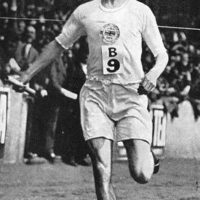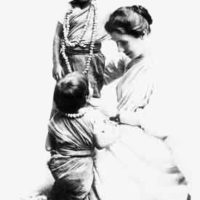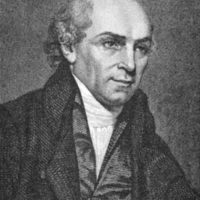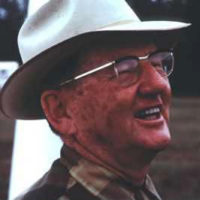
“There is no success without sacrifice. If you succeed without sacrifice it is because someone has suffered before you. If you sacrifice without success it is because someone will succeed after.” – Edward Judson, son of Adoniram
Adoniram Judson likely would never be considered as the poster boy for promoting missionary work.
He might be rendered “star status” for being one among the first group of Americans to put the vision of foreign missions to Asia. However inspirational his accomplishment of translating the New Testament into the Burmese language, the trials he endured in doing so would be enough to encourage many considering missions work to find an alternative occupation.
In fact, the Judsons and their fellow companions received “a sendoff with great fanfare” as they sailed for Calcutta on February 19, 1812. It had been a fortnight of great fortune for the fledgling 24-year-old missionary ferrying off towards his family’s future. With the threat of war looming between the U.S. and Great Britain, he departed for India just 14 days after marrying his wife, Ann, and 13 days after being commissioned for service at the Salem Tabernacle in Massachusetts.
Little did they, or could they, imagine the twists, and turns, and trials that lay ahead.
“A true disciple inquires not whether a fact is agreeable to his own reason. His pride has yielded to the divine testimony.”
Enamored by Reason
Judson was born August 9, 1788, the son of a strict Congregational minister. Considered to be brilliant academically (he learned to read at the age of three), he envisioned his illustrious educational appetite and accomplishments as the genesis of a successful career. He was accustomed to being the valedictorian of all of his classes.
However, due to the strict upbringing under which he was raised, his inability to reconcile his young sister’s untimely death with his father’s teaching that children who died before an age of accountability were hell-bound, and his schooling on the ideals of the French Enlightenment, he rebelled. Yielding to the persuasion many of his peers and to the rise of faith in human reason, he became a Deist like many of America’s founding fathers, believing that there is a God, but that he is not involved in our daily affairs.
It was the death of a classmate, dear friend, and fellow Deist, Jacob Eames, that caused Judson to ponder life and death more seriously. Being a Deist was one thing. Dying as one was quite another. He returned to his family home where, engaging in a thorough study of Scriptures with his parents, he placed his faith and trust in Jesus Christ on September 22, 1808. He enrolled in Andover Theological Seminary and graduated in 1809. Three years later, he was headed for India.
“It was during a solitary walk in the woods behind the college while meditating and praying on the subject and feeling half inclined to give it up, that the command of Christ to ‘go into all the world and preach the Gospel to every creature’ was presented to my mind with such clearness and power that I came to a full decision and, though great difficulties appeared in my way, resolved to obey the command at all events.”
Interrupted Plans
The voyage to Calcutta took four months. During the trip, the cadre of young, hopeful missionaries, hoping to meet British missionary William Carey, began to study his Baptist distinctives. By the time they arrived in India, they had adopted Baptistic principles. Not only did they meet with Carey, they were baptized by him.
That presented a problem. Their espousal of Baptist doctrine ended the financial support of the Congregationalists who had sent them. One of Judson’s associates, Luther Rice, headed back to America to establish a Baptist mission board and raise support for his friends already in India. Rice, himself, would never return to the field.
The War of 1812, although fought half a world away, prompted the British East India Company, the ruling authority, to force Judson to leave the country, partly in fear that their ministry would “interfere with (the company’s) nefarious trading practices.” They fled to Burma in 1813. The quickly adopted a love for the unreached who had no knowledge of the one, true God or of His love and grace or the gift of eternal life through Jesus Christ.
“I will not leave Burma until the cross is planted here forever.”
Inauspicious Beginnings
Judson spent most of his time studying the Burmese language in an open-sided zayat that he had constructed along one of the main paths to the Buddhist Temple that was Rangoon’s primary place of worship. By situating himself in such a strategic location, he was able to interact with passers-by, calling out to them, “Ho, every one that thirsteth for knowledge.” He both learned the language and shared the Gospel.
It would be six long years before Judson’s evangelizing would yield its first convert to Christ. However, two more Burmese made professions of faith within a matter of months. Another 16 accepted Christ over the next two years, and Judson established a Burmese church.
Four years later, in 1823, Judson finished his translation of the New Testament into Burmese. Judson and his family moved from Rangoon to Ava in January 1824. There, he intended to continue and complete his translation of the Old Testament.
Imprisoned, but Unimpeded
Five months after moving to Ava, was arrested and imprisoned on the pretense that he was suspected of being an agent of Great Britain during the Anglo-Burmese war. The conditions of the Let-may-yoon death prison. The horrors he suffered there strain our ability to comprehend how he – or anyone else – could survive in a place “too vile to house animals.”
He survived unspeakable pain and torture, at times being forced to spend entire nights with his feet shackled and suspended so that only his shoulders and head touched the ground. It is only by the grace of God that he survived the tortures to which his fellow inmates succumbed.
All the while, despite being shackled, Judson continue his relentless determination to translate the entire Bible into the Burmese language. He was able to protect his work by hiding his fragile manuscripts in a hard pillow that no one suspected or inspected. On several occasions, the pillow was taken from him, only to be miraculously retrieved with the manuscripts intact.
The last six months of his 21-month imprisonment were spent in “relative comfort.” His wife had negotiated an arrangement for him to have a private cell. Comfort meant being unshackled whilst housed in a cage that had housed a lion. It was neither tall enough to allow him to stand up nor long enough for him to lie down.
“If I had not felt certain that every additional trial was ordered by infinite love and mercy, I could not have survived my accumulated suffering.”
Into the Fray
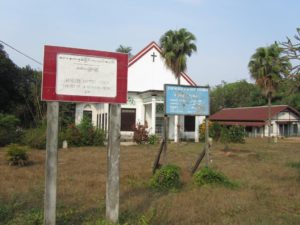
Near the end of the war, Judson was released from imprisonment, but summoned by the Burmese as a translator for them during peace negotiations in 1826. From thence, he continued his work of winning the Burmese, particularly within the primitive and brutal Karen tribe.
His imprisonment severely weakened him for the balance of his life. Yet, he finished the translation and revision of the Burmese Bible and an expanded Burmese to English dictionary.
Amidst all of this, he became a widower twice during his years in Burma and he suffered the additional heartbreak of losing several children to fatal illnesses.
“Lord, let me finish my work. Spare me long enough to put Thy saving Word into the hands of a perishing people.”
Judson died and was buried at sea in 1850, having accomplished his initial vision of seeing 100 natives converted and establishing a local church. In fact, by the time he passed to eternity, there were 63 local Christian churches, 7,000 baptized believers, and 163 missionaries, native pastors and other workers under his oversight.
In 1950, there were 200,000 professing Christians in Burma. A 2014 census indicated that there are now more than three million believers in Myanmar, the country formerly known as Burma. Christianity is now the second most popular religion in Myanmar.
Sources:
- Boston University School of Theology, Pioneer American Baptist Missionary in Burma
- Christianity.com, Adoniram Judson, First Missionary from the United States
- GFA (Gospel Fellowship Association) Missions, Adoniram Judson
- Inspiring Quotes, Adoniram Judson Quotes and Sayings
- International Bulletin of Missionary Research, The Legacy of Adoniram Judson
- The Reformed Reader, Apostle of the Love of Christ in Burma
- Truthful Words, The Life and Ministry of Adoniram Judson
- Wholesome Words, Adoniram Judson’s Imprisonment
- World Watch Monitor, Myanmar’s Christian population grows to 6.2 percent
Photo Source:
- George Peter Alexander Healy [Public domain], via Wikimedia Commons
- Fred Shelley (photo submission 2015081810003261) [CC BY-SA 4.0], via Wikimedia Commons

